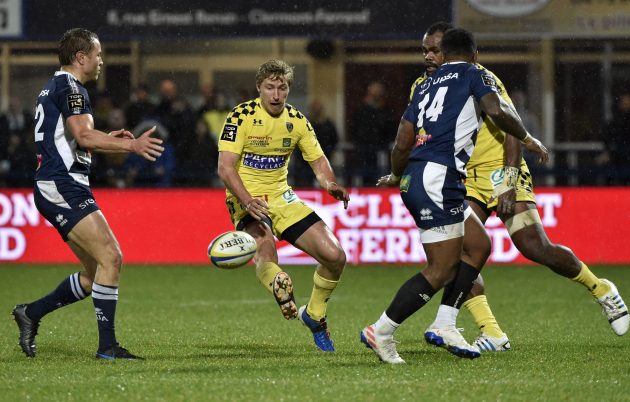Western Force fly-half Jake McIntyre tells us what to expect from rugby's latest law change
“The 50:22 kick should suit the more attacking teams”
The first person Jake McIntyre saw properly take advantage of the 50:22 kick law in Australia was full-back Rob Kearney. In a run-heavy league, the Western Force fly-half says, there is not the same imperative to kick often. But soon we will all have to understand how the tactic may change the game.
The 50:22 law was recently used in Super Rugby AU and will now spread out across the global game. With the law, if an attacking team kicks the ball from anywhere in their own half and it bounces inside the opposition 22 before going into touch, the kicking team gets the throw-in at the lineout.
Related: World Rugby law trials to include 50:22 kick
“They brought it in the year before I arrived (back in Australia after playing for Clermont),” McIntyre says. “And just from watching it, there weren’t many actually kicked in that first year. I don’t think there was many kicks this year either.
“What we did find this year was that as pretty much every team plays with two ‘full-backs’ in defence, it’s actually quite hard to kick them. Basically they were just covering the corners so all the space was down the middle. We found we were kicking down the middle more than we were to the edges, then you get a good chase line…

Jake McIntyre playing for Clermont (Getty Images)
“Probably the biggest time we focused on it was off scrums. That seemed to be the time that it opened up the most because obviously the opposition couldn’t cover the whole backfield and the front line as well. It was probably the hardest place to defend.”
To those raised on a diet of northern hemisphere rugby, it might seem logical that turnover ball is the most natural time to go looking for a 50:22 kick – and indeed, McIntyre remembers that it was from a turnover that Kearney laced his telling kick through.
Like the `hold up law', can't abide the 50.22 kicking one, as if players aren't smart enough to manipulate the field themselves. More space? possibly. More kicking concentrated fly halves? Definitely.
— Stuart Barnes (@SBarnesRugby) July 14, 2021
The Aussies are still getting used to the tactic and McIntyre admits that turnover ball could well prove the most likely time to go for it. However, he also explains that the tactical dial for Australia-raised kickers is likely to be very different from those in the North or South Africa.
However, while some fear that the northern hemisphere’s leagues may soon see even more aerial manoeuvres, McIntyre – who played in France with both Agen and Clermont – sees scope for teams to innovate because of the kick.
Could teams who shape to kick from scrums but then run have an edge, or vice versa?
“That’s where we found the biggest opportunity,” McIntyre replies. “Because if you set out to manipulate them, you make them defend the front line and then it was going to open up because you know the full-backs aren’t going to be able to cover that right corner. Then if they choose to close that off, it was ‘Okay, we’re gonna run it’.
“From a defensive point of view, that was really interesting because you normally think you’ve got to defend the set-piece move. Then we had to start talking about how we were going to cover the front line and the backfield. It’s bloody hard to do.
Rob Kearney nailed this 50/22 kick ?#FORvREB #FirstNationsRound #SuperRugbyAU pic.twitter.com/7f5B2nFwUc
— StanSportAU (@StanSportAU) March 12, 2021
“I think it should suit the more attacking teams, who aren’t afraid to run it.
“If you’ve got teams that are more kick-friendly, then other teams will be switched on to it and not worry about the run. But the teams that can hold on to the ball for long periods of time and want to play ball, you’ve got to defend them first and then that’s going to open up kicking opportunities. Depending on if they choose to use that tactic, it could actually help the more attacking teams, who can pick and choose when they want to use it.”
For McIntyre, the game in Australia was not noticeably impacted by the introduction of the law and the global trend of having two defensive players patrolling the backfield for kicks means you need to be canny.
The big areas for exploitation he sees are from the scrum and turnovers. However, the innovative coaches out there must already be considering how to make the most of any uncertainty over when to defend in the front line or worry about kicks…
Can’t get to the shops? You can download the digital edition of Rugby World straight to your tablet or subscribe to the print edition to get the magazine delivered to your door.
Follow Rugby World on Facebook, Instagram and Twitter.





